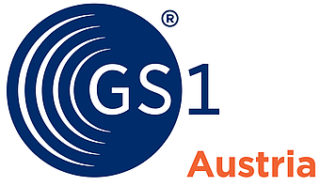Getting on retail store shelves
Six tips for companies to increase their chances of getting on retail store shelves
Getting their products on the shelves of brick-and-mortar stores is the holy grail for all start-ups and SMEs. Being accepted into large online retailers’ standard range of products oftentimes dramatically increases sales. However, it might take more than lovingly made or delicious products to convince experienced purchasers of putting a product on their shelves. EDITEL expert Christoph Stenech explains what other factors make a difference in this process.
Especially for small and medium-sized manufacturers of goods, finding the right balance can be a huge challenge. In addition to producing good products, they should also be marketing and sales geniuses. Self-operated sales channels oftentimes have limited potential. Against this background, the ultimate goal of many manufacturers is to get on the shelves of popular retail stores or to get accepted into the standard product range of large online platforms. Christoph Stenech, Head of Sales at EDITEL, a company that has assisted national and international retailers in all things Electronic Data Interchange for many years, explains how to improve your chances of getting your products on retail store shelves.
1. Product quality, certification, hygiene
Depending on the product category, it goes without saying that the product needs to taste good, look appealing, be functional and maybe even be unique. In addition, Austrian and/or European requirements for product safety and hygiene need to be met. Organic quality criteria and other sustainable criteria are getting increasingly important. This needs to be proven with certificates.
2. Provide sufficient quantities
Aspiring suppliers should be prepared for all possible scenarios before they might occur. Actually, being able to provide sufficient quantities can be an important criterion. Production and logistics processes should be well prepared in case the product turns out to be a bestseller. It should also be taken into account that demand for specific products depends on the season. Therefore, production capacities should be expanded as needed. Another possible scenario is that the product might be taken off the shelves if consumer demand is low.
3. Increase brand awareness in advance
Before talking to retailers about getting your product on their shelves, it is advisable to take marketing action to increase awareness for your product or brand. If you plan to introduce a novel product category, oftentimes consumer demand needs to be created first and a target audience should be defined. Possible marketing activities include search engine optimization or even appearances on start-up shows on TV.
4. Be well prepared for negotiations
After all the preparatory work has diligently been done, the best case scenario is that retailers themselves will approach the manufacturer. However, these cases are rather rare. Usually, manufacturers actively reach out to retailers, either by e-mailing, calling, or registering on supplier platforms operated by retailers. If a manufacturer scores an appointment to present their product, they should be prepared to answer the following questions: What audience are you targeting with your product? Do you have a realistic pricing model? Have your prices been professionally calculated? What accompanying marketing activities have you planned? Can the design and the packaging be adapted if needed? In addition, you should have a basic understanding of product identification and data interchange. We also recommend reading the logistics handbooks issued by all relevant trading partners.
5. EAN barcodes and article master data
A key issue for packaged products is their identification using ID numbers and barcodes which allow for products to be scanned at the time of purchase. Separate codes are needed for pallets and other shipping containers. The technical term for this code is Serial Shipping Container Code (SSCC). In Austria, the official issuer of these codes is GS1 Austria. Among other things, this organization helps provide article master data (via GS1 Sync) and offers assistance for questions of traceability. Article master data include article numbers (GTIN/EAN), weight, nutritional information, and origin. These article master data will be exchanged on a regular basis with all retail partners.
6. Electronic Data Interchange is oftentimes a must
In addition to article master data, manufacturers also exchange transaction data with retailers on a regular basis. These include, among others, orders, despatch advices, and invoices. Many large retail stores actually require their suppliers to use Electronic Data Interchange (EDI). With other retailers, suppliers can at the very least score points if they use Electronic Data Interchange because it is a sign of professionalism. The automatic and electronic exchange of business documents also helps manufacturers save time and money. In addition, it avoids the many mistakes that can occur during manual data entry. In practice, retailers usually have specific requirements regarding the format of exchanged documents. Experienced EDI service provider such as EDITEL usually have all the answers about industry-specific practices.
Dramatically increase your chance of success
In business life, second chances are rare. “Before reaching out to retailers, manufacturers should be very well prepared and consult experts. After all, it would be a pity if their first attempt failed due to mistakes that could easily have been avoided,” said Mr. Stenech.
The press release „Six tips for companies to increase their chances of getting on retail store shelves“ is also available as a download.
Symbolic image copyright iStockphoto, Gurzzza
Portrait photo Christoph Stenech copyright Editel/Nadja Nemetz













